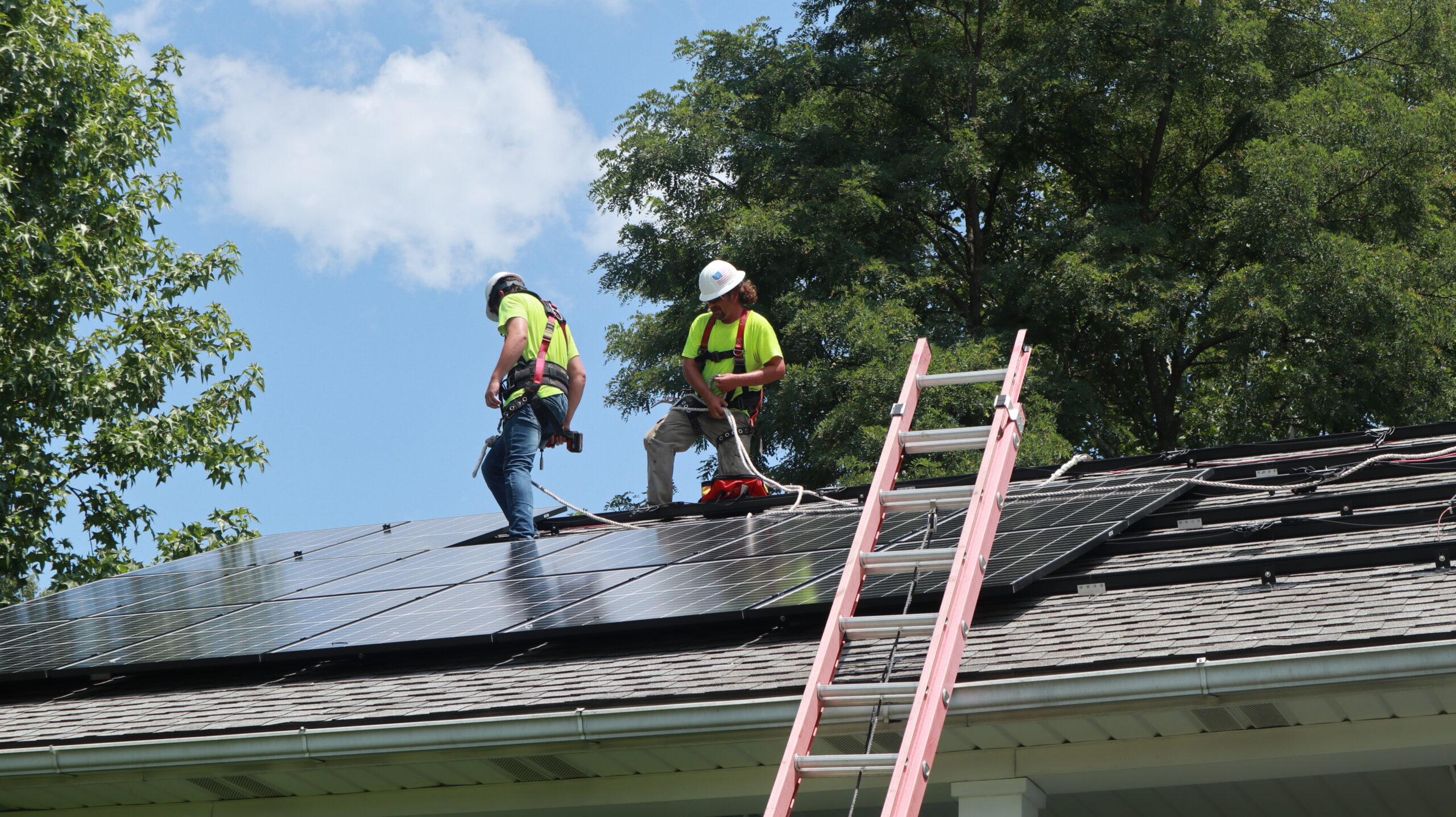Jaber Wahel began considering solar in Cleveland, Ohio. 2 years later, he had Kokosing Solar install a 20-panel array on a flat, south-facing roof of his house. The array was designed to offset 46% of Jaber’s electricity in one year.
His motivation for going solar? It was primarily environmental, but the investment also needed to make economic sense. Most of the savings a homeowner sees when they go solar come from the savings in electricity bills over that time, but a significant portion for Jaber also came from the 30% Federal Tax Credit that he claimed.
The Journey
Jaber often goes to California for work. Over time, he saw more and more homes in the Golden State with solar. This indicated to him that a movement was building. Seeing the significant solar infrastructure in CA first sparked his interest in the solar movement.
Considering Solar in Cleveland Ohio
Jaber’s first step when shopping for solar, like many homeowners just beginning their solar journey, was to learn.
Solar in Cleveland Ohio?
Jaber was first interested in how the climate affects solar production. Sure, solar was booming in California, but does solar make sense in Ohio? Working with Kokosing Solar, he found out that solar, even in an area like Cleveland, Ohio, despite getting far less sun time than places like California, still gets enough to make solar PV installation practical.
Roof Slope
Jaber was curious how the angle of his roof would affect the system’s efficiency. Unlike most of our residential customers, his panels sit on a flat roof surface on the southern side of his home. This roof space was where he had the most uninterrupted, southern-facing roof space.
In Ohio, anywhere between a 4/12 and a 7/12 roof pitch is just fine for solar. These angles maximize the sunlight captured in both the summertime and winter. To get this desired pitch on a flat roof, Kokosing Solar uses ballasted racking, which tip the panels at a 10-degree tilt. Though panel efficiency does change a little depending on the angle of your roof, the difference is minimal.
Net Metering
Jaber was surprised to learn that he didn’t need solar batteries to go solar. He learned that if your home is connected to the grid, a solar system works seamlessly with your current electricity supplier to ensure that you have power. When it’s nighttime or snowy, the energy you use comes from the grid. Energy comes from your panels when the sun is shining. And, when the sun is shining, and you aren’t using energy, that extra energy is exported to the grid to power your neighbor’s homes, and you get credit for the energy you’ve produced. Net metering is the policy through which customers receive credits for the excess energy they produce.
The Plunge
When Jaber started considering solar in Cleveland, Ohio, he got quotes in the $50-60,000 range. Since then, the prices dropped significantly, and paired with federal incentives, solar made financial sense.
Reaping the Benefits
The most surprising part of Jaber’s process was how fast the installation took – in his case, it was just one day! For Kokosing Solar, the typical residential solar installations last between 1-4 days. The electric company came out within the next couple of days to switch out his meter for one that understands how to work with the solar system. After that, he turned on his system and started producing his own electricity!
His favorite part about his solar array is that the system is 100% hands-off. He says: “You just set it and forget it – it’s plug and play- you don’t think about it ever.” What has been the best part of having a solar powered home so far?
According to Jaber, the best part is that it works! He really is able to harness the sun to produce his own electricity.
Solar in Shaker Heights Ohio
When he walks around, Jaber says that he’s noticed maybe 10-15 houses in his community that have solar, though he doesn’t personally know anyone who also has an array. The City’s current Mayor has an electric car and solar on his house. He does know a lot of community members who have thought about it.
Jaber believes that there is a lot of inertia in the solar movement: it’s a movement gaining speed.
When asked what he thinks is stopping people from going solar, he says: “People think it’s complicated – for me, it was such an easy thing.” He says that the most challenging thing was filling out the loan application, which Kokosing Solar was there to help him.
He thinks the same is true of electric cars. While people are hesitant now, there is still a movement building. Once people overcome the anxiety see that it’s a technology that works, they’ll be more willing to adopt it.
According to Jaber, if you get out of Ohio and see how much it’s going up in other places- it makes choosing solar power easy.
The Solar Champion
Jaber says– “If you have a customer who is interested and hesitant, give me a call – I would be happy to talk with anyone about it.”
Interested in taking Jaber up on his offer? If so, reach out and we will connect you.


